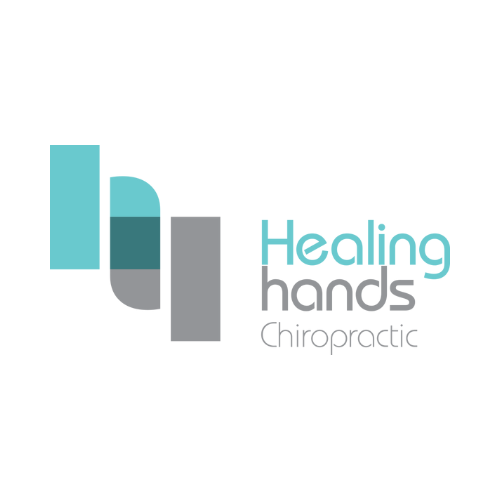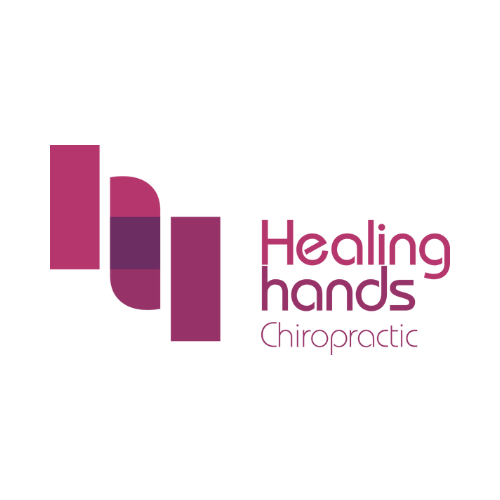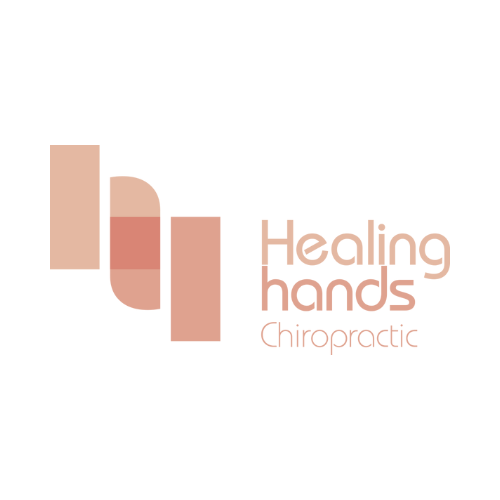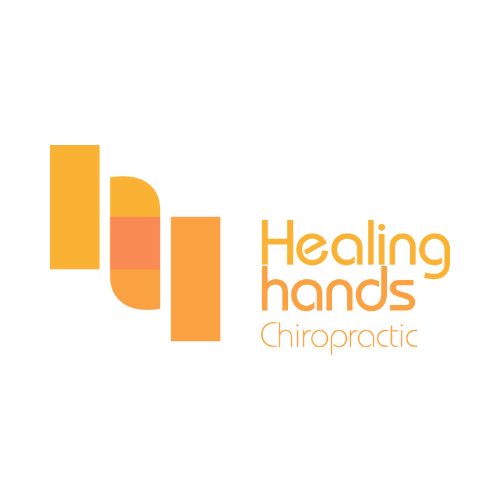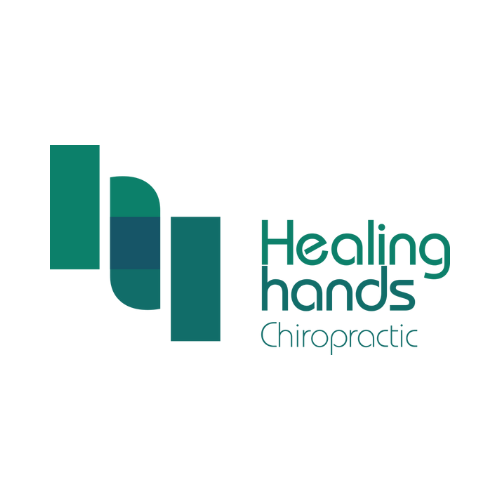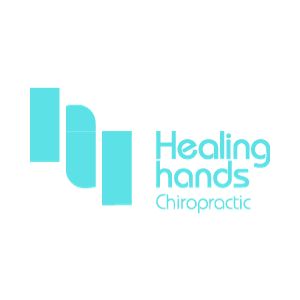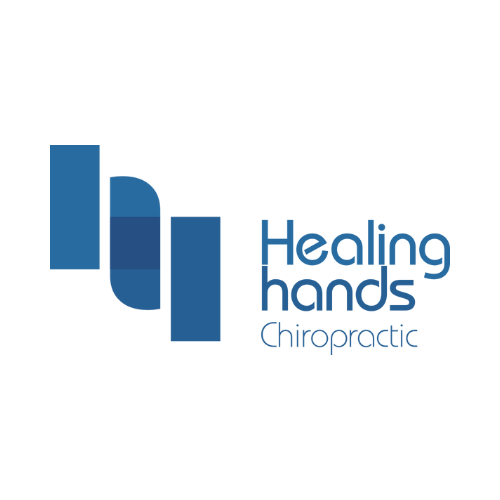Sciatica
What is sciatica?
Sciatica, which involves 3 nerves in the low back is a common term that generally is used to describe leg pain. Sciatic pain often occurs with low back discomfort, where radiating pain is going the affected leg.
Leg pain is often thought to be correlated solely to disc herniation (degeneration/injury of a vertebral disc). In some common cases that would be true, but as Chiropractors we often ask ourselves: “Does disc herniation always cause leg pain?” and the answer is not always a definitive NO.
In some cases, vertebral disc can cause direct pain to the low backtests like an MRI would have to be done to determine if it is the case. Over the years, it is inevitable that the disc may degenerate since it is a physiological process of aging. There are many bad habits that we adopt (i.e. sitting hours, wrong lifting technique, “Text Neck” etc.) that speed up this degenerative; the problem is that this is taking epidemic proportions in the population because of long working hours, stress and poor ergonomics just to name a few.
According to studies, vertebral discs are now more prone to prolapse (first stage of disc injury) between the age of 20 and 50. In this time interval, most of the internal fluid content of the disc gets lost, the gel like portion of the discs starts to dry out faster than normal causing a lost in its softness. Thus, It might bring us to think that a dehydrated(drying) disc is healthier: No. Since the time between our 20 and 50 years of age is the one in which we make more efforts and put more load on our spines. It is essential and necessary to have constant and appropriate hydration to keep your discs functioning.
What are the symptoms of sciatica?
Sciatica is characterized by pain that originates in the lower back or buttock and travels into one or both legs. The pain is often described as sharp, burning, or searing, rather than a dull ache. The specific symptoms of sciatica can vary in intensity and type, but they generally include:
Pain: This is the most common symptom and can range from mild aches to sharp, burning sensations, or excruciating discomfort. The pain might feel like an electric shock and is often worsened by prolonged sitting or sudden movements.
Numbness or Tingling: These sensations often radiate along the path of the sciatic nerve, especially down the leg.
Weakness: Muscles along the path of the sciatic nerve might feel weak, making it difficult to move the foot or leg.
Pins and Needles: This prickling sensation can be felt in the feet or toes.
Difficulty Moving: There might be difficulty in moving the affected leg or foot due to pain, weakness, or other sensations.
Stiffness: The lower back, buttock, or leg might feel stiff or tight.
Foot Drop: In more severe cases, there might be an inability to flex the ankle or bring the foot upwards.
It’s worth noting that the symptoms of sciatica often manifest on one side of the body. The specific location and type of sensation can vary depending on where the sciatic nerve is affected. For instance, a compression or irritation at a particular spot might produce symptoms only in the buttock and thigh, while a different location might result in symptoms that run all the way down to the calf or foot.
What are the complications from sciatica?
While many people recover from sciatica without lasting effects, persistent sciatica can lead to some complications. Here are potential complications and issues that can arise from untreated or chronic sciatica:
Chronic Pain: One of the most evident complications is ongoing pain. For some individuals, this pain can become chronic, impacting daily activities and quality of life.
Loss of Feeling: Prolonged compression or irritation of the nerve can result in numbness in the affected leg, and in extreme cases, this might become permanent.
Weakness in the Affected Leg: Persistent sciatica can lead to muscle weakness in the affected leg. Over time, this can affect a person’s ability to move or use the leg normally.
Loss of Bowel or Bladder Control (Cauda Equina Syndrome): While rare, compression of the lower spinal cord or cauda equina can lead to a severe condition called cauda equina syndrome. This requires immediate medical attention. Symptoms include severe low back pain, weakness or numbness in the legs, and loss of bowel or bladder control.
Decreased Quality of Life: Chronic pain, limitations in mobility, and other symptoms can significantly impact daily activities, work, and overall enjoyment of life.
Depression and Anxiety: Chronic pain conditions, including sciatica, can contribute to the development or worsening of depression and anxiety.
Physical Deconditioning: People with chronic sciatica might avoid physical activity due to pain. This can lead to overall deconditioning, making muscles weaker and more prone to injury.
Dependency on Medications: For some, the pain from sciatica might lead to prolonged use of pain medications, which can result in dependency or side effects.
Potential Side Effects from Treatments: If surgical interventions or other treatments are used, there’s always a risk of side effects or complications from those procedures.
If you or someone you know is experiencing symptoms of sciatica, especially if they are severe or persistent, it’s essential to consult with a healthcare professional. Getting a proper diagnosis and timely treatment can help prevent some of these complications.
The common causes of sciatica:
It is essential to understand as soon as possible if a real disc herniation causes the leg pain or whether the culprit is something else, such as rotation of the pelvis, a muscular problem or a ligament overuse. We collect as many information as we can to understand where the problem is coming from so we can consequently treat the patient in the best possible way.
Most of the people with sciatica worry only about the pain. Pain is most of the time an alarm bell from your body telling us that something is wrong, not functioning correctly. At Healing Hands, it is of paramount importance to understand the primary causes of dysfunction that over time cause pain.
One of the most common causes of sciatic pain comes in fact from the pelvis. Rotation of the pelvis is most common often due to our increasingly sedentary lifestyle. These rotations though cause significant changes in the normal movement of the whole spine. It results in an alteration of the normal load distribution, which can over time lead to injury of ligaments or intervertebral discs.
A pelvic dysfunction can also cause leg pain even in the absence of disc herniation. The rotation of the pelvis can cause an unbalance of tension and tone of the leg musculature, causing pain.
Specific vertebral blockages (parts of the spine that do not move as they should be) can also decrease the function of some stabilizing muscles. Let’s say that a spinal blockage is “switching off” your Psoas Major muscle, which is one of the muscles in your body that supports your lumbar vertebra and the intervertebral disc at the same time. In this case, the result would be an unstable spine, which can lead to muscle spasm, misalignment of the spine, inflammation and even injury of the discs and joints in the spine. At Healing Hands we aim to restore the functions of your body through the use of spinal adjustments and other modalities of treatments to create more natural support for your spine.
Some of the causes of leg pain were listed above, but as chiropractors, we always consider if a disc is damaged, injured or highly inflamed (hot disc), in order to determine if other interventions are needed other than Chiropractic. When a real injury of the intervertebral disc occurs, our priority is to reduce the inflammation in the area affected and to decrease any potential pressure if the inflamed disc-over the spinal nerve roots. With time, then we will focus to correct misalignments, articular dysfunction and restore the function of the stabilizing muscles.
Do i need to see a doctor for sciatica? When should I see a doctor?
Whether or not you need to see a doctor for sciatica largely depends on the severity and duration of your symptoms. Here’s some guidance:
You might consider waiting before seeing a doctor if:
- Your symptoms are mild and have just started.
- You believe you can manage the pain with over-the-counter pain medications.
- You have experienced similar symptoms in the past and they resolved on their own.
- You see gradual improvement with self-care measures like rest and gentle exercises.
You should consider seeing a doctor if:
- The pain persists for more than a week.
- The pain is severe and debilitating.
- Self-care measures do not provide relief.
- You experience sudden, severe pain in your low back or leg.
- The symptoms begin following a traumatic incident, like a car accident.
- You have trouble controlling your bowels or bladder (this requires immediate attention).
- The pain and other symptoms interfere with your daily activities.
You should seek emergency medical attention if:
- You experience sudden, intense pain in your lower back or leg and numbness or muscle weakness in your leg.
- The pain follows a violent injury, like a traffic accident.
- You have trouble controlling your bowels or bladder. This can be a sign of cauda equina syndrome, a serious condition that requires urgent treatment.
It’s always a good idea to listen to your body. If you’re concerned about any symptoms you’re experiencing, or if you’re unsure about the severity of your condition, it’s better to err on the side of caution and consult a healthcare professional. They can provide guidance on the best course of action, potential treatments, and any necessary interventions.
What are the treatments for sciatica?
Sciatica treatment aims to alleviate pain and other associated symptoms. The approach taken often depends on the cause of the sciatica and its severity. Here are some common treatments for sciatica:
- Over-the-Counter Pain Relievers: Nonsteroidal anti-inflammatory drugs (NSAIDs), such as ibuprofen, can help reduce inflammation and pain.
- Chiropractic Adjustment: This is the core of chiropractic treatment. By realigning the vertebrae, chiropractors can help improve spinal function. When it comes to sciatica, these adjustments can help to relieve the pressure on the sciatic nerve, thereby alleviating pain and discomfort. Proper spinal alignment can also enhance the body’s ability to heal itself.
- Physical Therapy: Once the acute pain improves, a physical therapist can design a rehabilitation program to prevent future injuries. This usually includes exercises to correct posture, strengthen muscles, and improve flexibility.
- Prescription Medications: Depending on the pain level, doctors might prescribe anti-inflammatories, muscle relaxants, narcotics, tricyclic antidepressants, or antiseizure medications.
- Epidural Steroid Injections: If the pain is severe, an injection of a corticosteroid can be injected into the area around the involved nerve root. Corticosteroids help reduce pain by suppressing inflammation around the irritated nerve.
Surgery: Surgery might be an option if conservative treatments do not alleviate the pain or if there’s a progressive neurological decline. Common procedures include:
Always consult with a healthcare professional before starting any treatment for sciatica. They can provide recommendations based on the specific cause and severity of the symptoms.
Is chiropractic treatment good for sciatica? Should i see a chiropractor?
Chiropractic care is based on the principle that spinal alignment can affect the overall health of the body, particularly the nervous system. When it comes to sciatica, chiropractic treatment aims to address the underlying causes of the pain rather than just managing the symptoms.
Spinal Adjustments (Manipulation): This is the core of chiropractic treatment. By realigning the vertebrae, chiropractors can help improve spinal function. When it comes to sciatica, these adjustments can help to relieve the pressure on the sciatic nerve, thereby alleviating pain and discomfort. Proper spinal alignment can also enhance the body’s ability to heal itself.
Reducing Inflammation: Misalignments in the spine can cause inflammatory responses, which can exacerbate sciatica pain. By restoring proper alignment, chiropractic adjustments can help reduce inflammation around the sciatic nerve.
Increasing Mobility: Sciatica can limit mobility, especially if there’s significant pain or muscle spasm. Regular chiropractic adjustments can help improve spinal movement, which in turn may reduce stiffness and pain, allowing for better mobility.
Non-invasive Treatment: For individuals looking to avoid medications or surgery, chiropractic care offers a non-invasive alternative. This makes it a preferred choice for many who suffer from sciatica.
Customized Treatment Plans: A chiropractor will often conduct a thorough assessment of a patient’s posture, spine, and reflexes. Based on this assessment, as well as any imaging studies, they will tailor a treatment plan specifically for that individual’s needs.
Complementary Therapies: Many chiropractors also incorporate other therapeutic treatments to enhance the effects of spinal adjustments. This might include therapies like ultrasound, cold laser therapy, or electrical muscle stimulation. These treatments can further reduce inflammation, promote healing, and alleviate pain.
Advice on Lifestyle and Exercises: Apart from spinal adjustments, chiropractors often provide advice on exercises, stretches, and ergonomic adjustments that can help prevent sciatic pain from returning. This holistic approach aims not only to treat the current pain but also to prevent future episodes.
It’s essential for patients to remember that while many individuals report significant relief from sciatica symptoms through chiropractic care, results can vary. Some may find complete relief, while others might experience only partial reduction in symptoms. Before starting any treatment, a thorough consultation and examination by a qualified chiropractor are essential to ensure the best possible outcome.
At Healing Hands Chiropractic Singapore, our main goal is to get to the root of the issue and handle it with precise non-invasive techniques that help relieve pain altogether. Remember, you do not have to live in pain as Healing Hands Chiropractic Singapore has the solutions.
Why Choose Us?
Healing Hands Chiropractic has been in the industry for 12 years and has a team of experienced chiropractors dedicated to helping patients with tension relief and management. We are experienced in relieving tensions and are able to help you to manage the pain using holistic and effective means. Healing Hands Chiropractic Singapore is one of the most reviewed and trustable chiropractic clinic. With over 1600+ five star reviews and real before vs after patients photos, you can entrust us with your health!
Get Rid of the pain today
Want To Have a Healthier and Happier life?
Book Your Appointment Today!
What To Expect During Your 1st Visit
Identifying postural imbalances to detect any differences in weight between the right and the left sides of the body, alignment from our head all the way down
to our hips. Tyron thermographic spinal scan helps to measure the muscle temperature around the spine. It detects areas with the greater temperature where muscles are working harder due to poor posture.
1-on-1 consultation with our Chiropractors with a detailed review of your health history.
Our Chiropractor will investigate and educate you on the necessary steps forward in reaching your health goals.
Our Chiropractors will perform a series of range of motion tests to determine your current body condition and an adjustment will be administered if deemed
clinically safe to do so.
Our Chiropractors will use their hands or a small instrument to apply a controlled force to the spinal joints. “Crack” or “Pop” sound may occur as your spine gets manipulated. Do not be alarmed, as the adjustment releases trapped gasses from your joints.
X-Rays will be prescribed so that we can accurately diagnose your condition before prescribing a customized treatment program. It is also for your safety and for us to rule out any possible underlying conditions that cannot be treated by Chiropractic.
The review of your X-rays is complimentary at your following visit if you take up the X-rays with our preferred diagnostic partners.
Frequently Asked Questions
A chiropractor provides non-invasive treatments with the benefits of spinal adjustments and realigning the joints to improve the system and function throughout the body.
In general, chiropractors believe in the ability of the body to self-heal through Chiropractic adjustment with the help of modalities such as the Flexion distraction table, E-stim, Denneroll, and functional exercises. They also utilize various other treatment modalities such as ultrasound, bodywork, etc. to get patients back to health.
We recommend seeing one if you are experiencing any discomfort, pains or aches in your muscles or joints. Check out the list of conditions we treat here.
Most importantly, do not wait until you are experiencing pain or worse, numbness to see a chiropractor. Often, pain is the last thing that shows up but the first to go away after chiropractic treatment.
There is no better time to visit the highest rated chiropractor in Singapore. Book your appointment here.
Chiropractic adjustment should not be painful. However, in some instances when the injury is either acute (happened recently) or sub-acute(on the road to recovery), the muscles and ligaments may prove to be guarded or sensitive to the touch, these are some exceptions.
A thorough examination of your complaints and conditions can alleviate any concerns that you may have.
It is a very safe & accurate thermographic scanner that scans the full spine or segmental parts of the spine in approximately 15 seconds. The Tytron detects areas of asymmetry as well as indicate areas with greater temperature due to acute soft tissue damage.
The Tytron scanner uses precision sensors, speciality lenses and a unique focusing system to give the chiropractor the most accurate and repeatable information available. You will be given a print out of your result on the first visit.
Book your first appointment with us to experience the Healing Hands chiropractic journey.
X-rays are recommended if you want to take care of your condition holistically and to get to the root of the issues. It is also for the patients safety and for us to rule out any possible underlying conditions that cannot be treated by Chiropractic adjustment. Just like your regular health check up, X-rays serve to give you and the chiropractor an insight to your spinal health as our naked eyes can only tell a rough story.
Our Chiropractors will use their hands or a small instrument to apply a controlled force to the spinal joints.
A “Crack” or “Pop” sound may occur as your spine gets manipulated. Do not be alarmed, as the adjustment releases trapped gasses from your joints.
Yes, we have both Male and Female Chiropractors at Healing Hands Chiropractic Singapore.
Our Female Chiropractors are stationed at Healing Hands Ang Mo Kio.and Healing Hands Bedok
All our Chiropractors believe in personalised care supported by time-tested techniques enhanced with the most efficient time frame. All our Chiropractors embody our 3 core values; Care For Patient, Integrity and Attention to Detail.
Yes, neck adjustments are a very safe treatment when performed by chiropractors as they are trained in the correct techniques to manipulate the joints safely. Healing Hands chiropractors also ensure that it is clinically safe enough for the adjustment before they perform it. This is also one of the reason why X-rays are required before more customised treatment can be done to ensure that your body is able to receive it.
The benefits of getting chiropractic treatment helps with reducing pain and increase joint mobility. We’ve written an article all about it here.
There also seems to be a lot of concern about the safety of getting adjusted by a chiropractor. However, when done by a professional chiropractor, spinal manipulation and Chiropractic care are generally considered safe, and effective treatments for acute pain.
Healing Hands Chiropractic Singapore has been treating thousands of patients since 2010 and many have benefited from it.
We hope to tell people more about chiropractic so that more can come to understand and appreciate how chiropractors can help with the various conditions for the people in Singapore.ut chiropractic so that people can understand and appreciate Chiropractic.
According to MOH, there are currently 150 chiropractors in Singapore. Choosing the most effective chiropractor for you may be challenging.
That is why we have written an article about 5 ways to find a good Chiropractor. In short,
1) Know your own health goals.
2) Integrity and confidence of the Chiropractor.
3) Word of mouth or reviews about the Chiropractor.
4) Clinical competency and experience of the Chiropractors.
5) The willingness of the Chiropractor to refer out.

